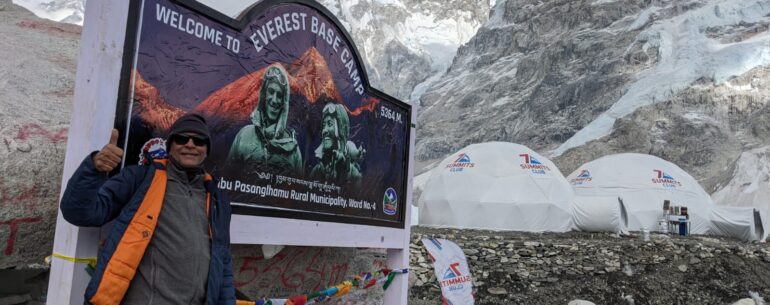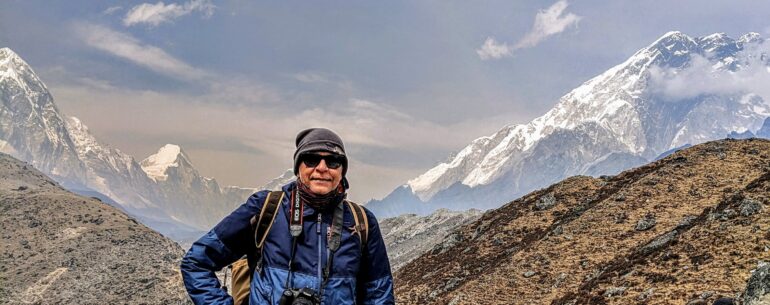Trekking is one of the best ways to experience the grandeur of the Himalayas. And when the trek provides an opportunity to view some of the highest peaks in the world, it is certainly very special. That is exactly what the Everest Base Camp trek is all about. Apart from sighting the World’s highest peak, Mt. Everest(8848m), 2 other peaks over 8000m high, namely Lhotse(8516m) and Makalu(8485m) and many more over 6000m high, are clearly visible. Called Sagarmatha in Nepal, the allure of Mt. Everest is irresistible.
Varied experience
With over 30k trekkers annually, the Everest Base Camp(EBC for short) trek is among the 3 most popular treks in Nepal, the other two being Annapurna and Annapurna circuit treks. The EBC trek of about 14 days provides every kind of experience one can hope for in these mountains. Some of these will stay with me for a long time – the wobbly(but quite safe in reality) flight between Ramechhap and Lukla in an 18 seater Otter plane, stunning sights of snow covered peaks, the daily grind of courageous sherpas carrying enormous weights on their backs up the mountains , the ladies in Khumjung tea house who were so delighted to make fresh ‘aloo paratha’ for dinner and breakfast, the silent memorial near Thukla in honour of those who perished while attempting to summit Mt. Everest and during the avalanche that hit the EBC in April, 2015, the very lively town of Namche Bazar at 11,300 ft., and much more.
Note that from the EBC itself, Mt. Everest is not visible. But there will be plenty of occasions to view it on the way.

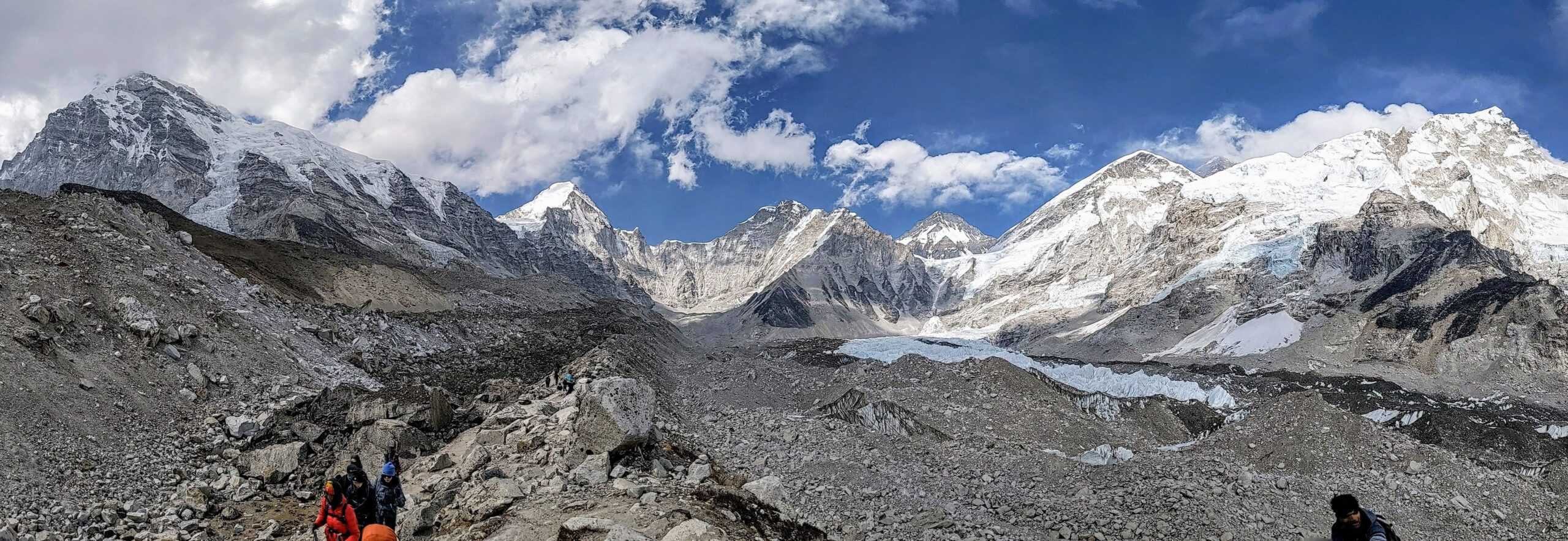
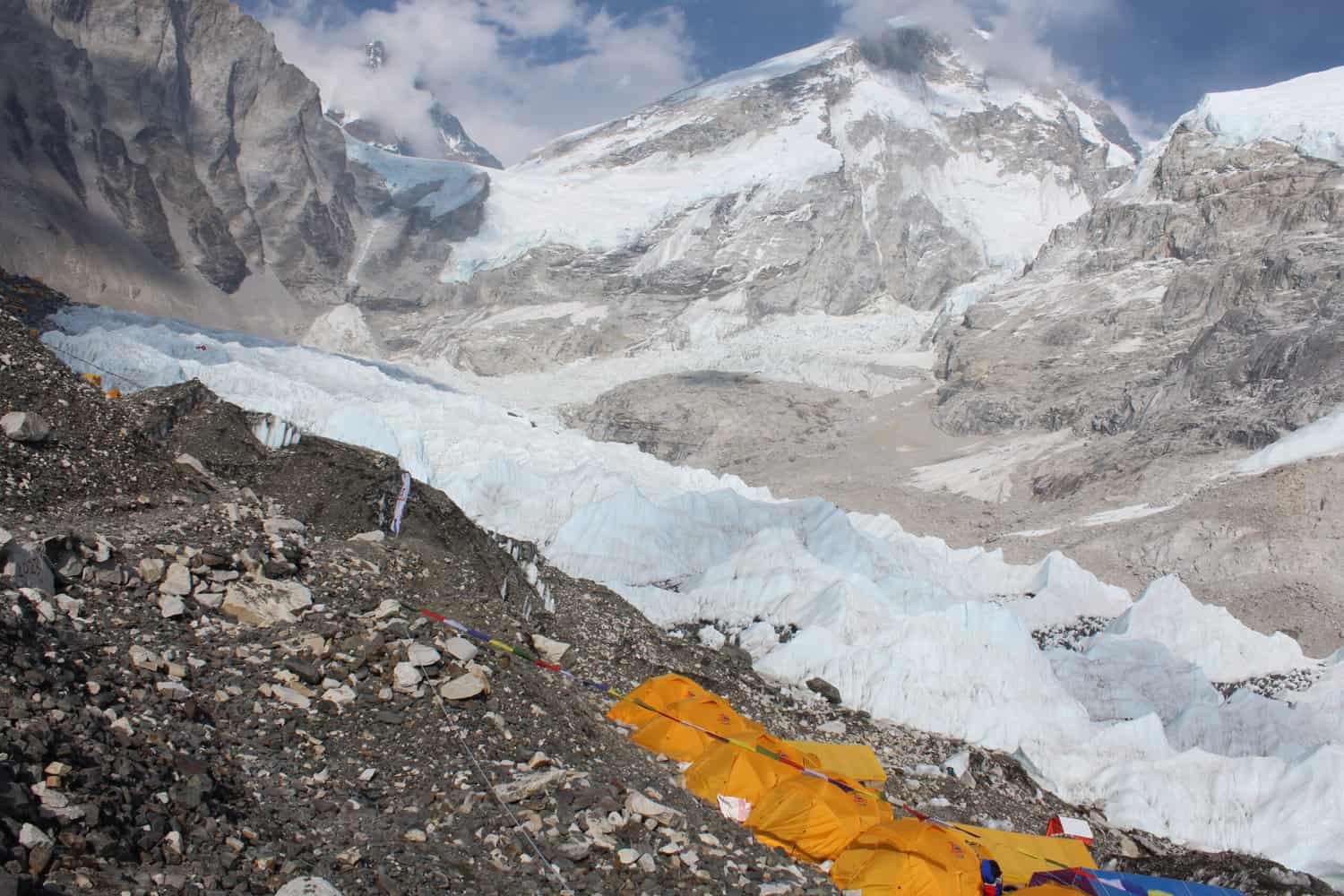


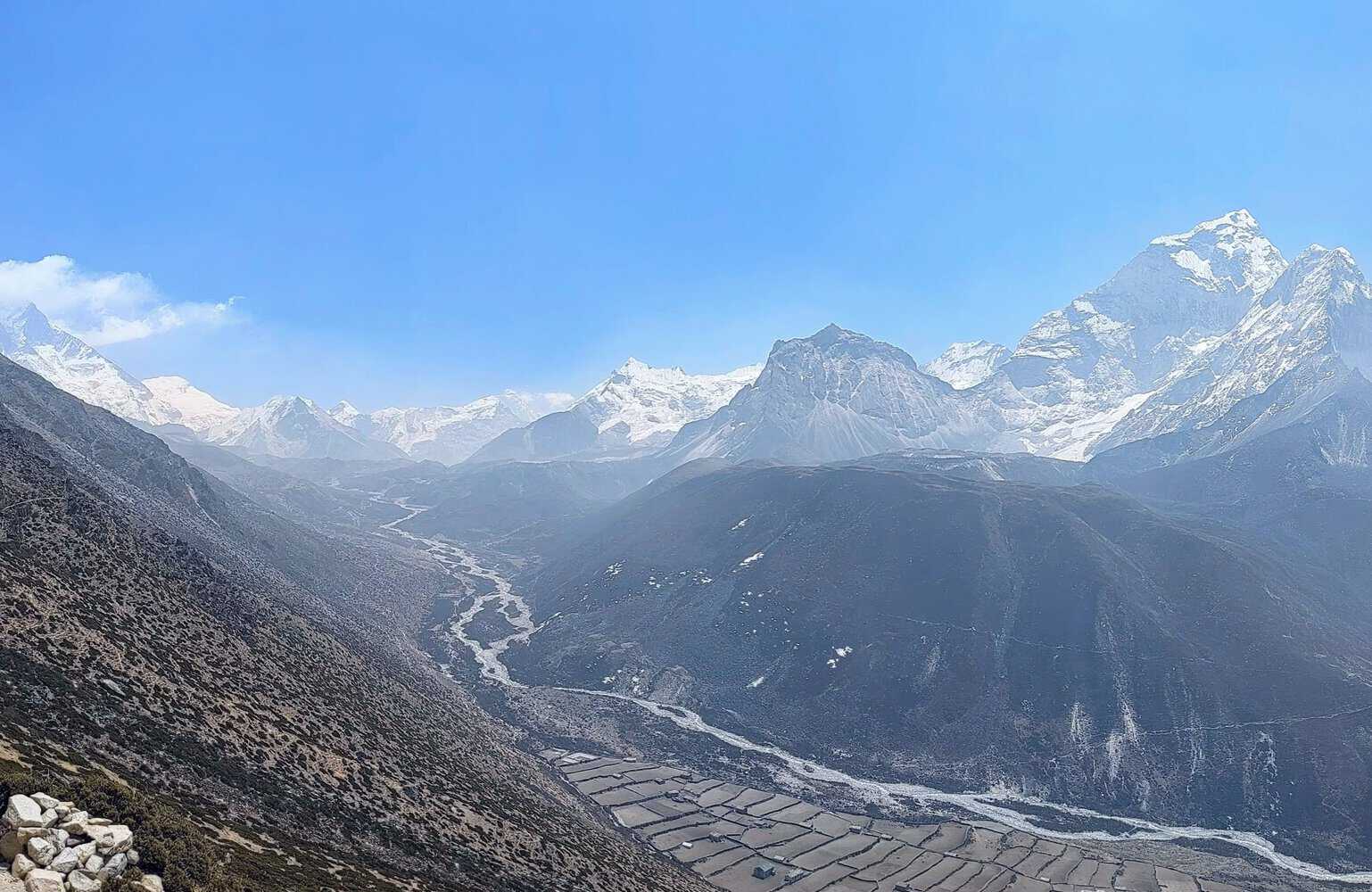
What makes EBC a doable high altitude trek?
There are few reasons why the EBC is relatively convenient to do than other high altitude treks:
- Presence of Tea Houses or Lodges all the way to the EBC;
- Availability of porters/mules to carry luggage;
- Availability of horses on the entire stretch;
- Regular service by helicopters between Kathmandu and several destinations at higher altitudes such as Gorakshep, Dingboche and Pheriche.
The two biggest variables that can be a spoilsport and over which one does not have any control are Acute Mountain Sickness and fickle weather conditions. While weather is predictable to a degree in the mountains, AMS is not. It can strike anyone, irrespective of age and fitness, even if one has taken Diamox. One could be fully normal on a given day and start developing symptoms of AMS the next day. The good news is that on the EBC trek, one can rent horses when needed. In extreme cases, an evacuation by helicopter is also an option.
Full helicopters can be hired for ~USD 3k or so. Seats 5-6 passengers. A single seat can cost an average of ~USD 500 but the rates do tend to vary. Rates can double if the helicopter has to fly empty in one direction. Horse rides can cost ~USD 100-200 from one point to the other nearest point. For example, from Lobuche to Dingboche. Or Lobuche to Pheriche.
Here is what I experienced and learnt over the 11 effective days of EBC trek.
Don’t get misled by the net altitude.
From Lukla at 9200ft. to EBC at 17600ft. is an increment of 8400ft. But this does not mean you will climb only 8400 ft. over 8 days. The upward route is not linear. There can be several ups and downs from one halt to another. For example, between Khumjung and Tengboche, the net altitude increase is ~350ft. But in reality, I climbed ~1700ft. and descended 1350ft.! Then there is also the climb to Nangkartshang Peak of ~1000ft(mid way). Overall, including the return journey, I would not be surprised to learn that I have climbed more than double the net altitude increment of 8400ft. Meaning a total climb(and descent) of ~17k ft. or more.
EBC trek is for trekkers and not leisure tourists.
EBC is not an easy trek. The length, duration, diverse terrain of the trek route and the high altitude puts it out of reach of those who are less than moderately fit. Just like climbing Mt. Everest, EBC trek is oversold. Few end up using horses and a minority end up getting evacuated by helicopter. But with 95% success rate(unverified), EBC can be attempted by anyone in good health. One does not need prior trekking experience.
If you are not used to walking or exercising at home regularly, few weeks of practice is a must. EBC trek requires an average of 6-8 hours of walk every day, up and down over diverse terrain at high altitudes. Whichever you train, one uncertainty will still remain – will your body easily cope with the high altitude?

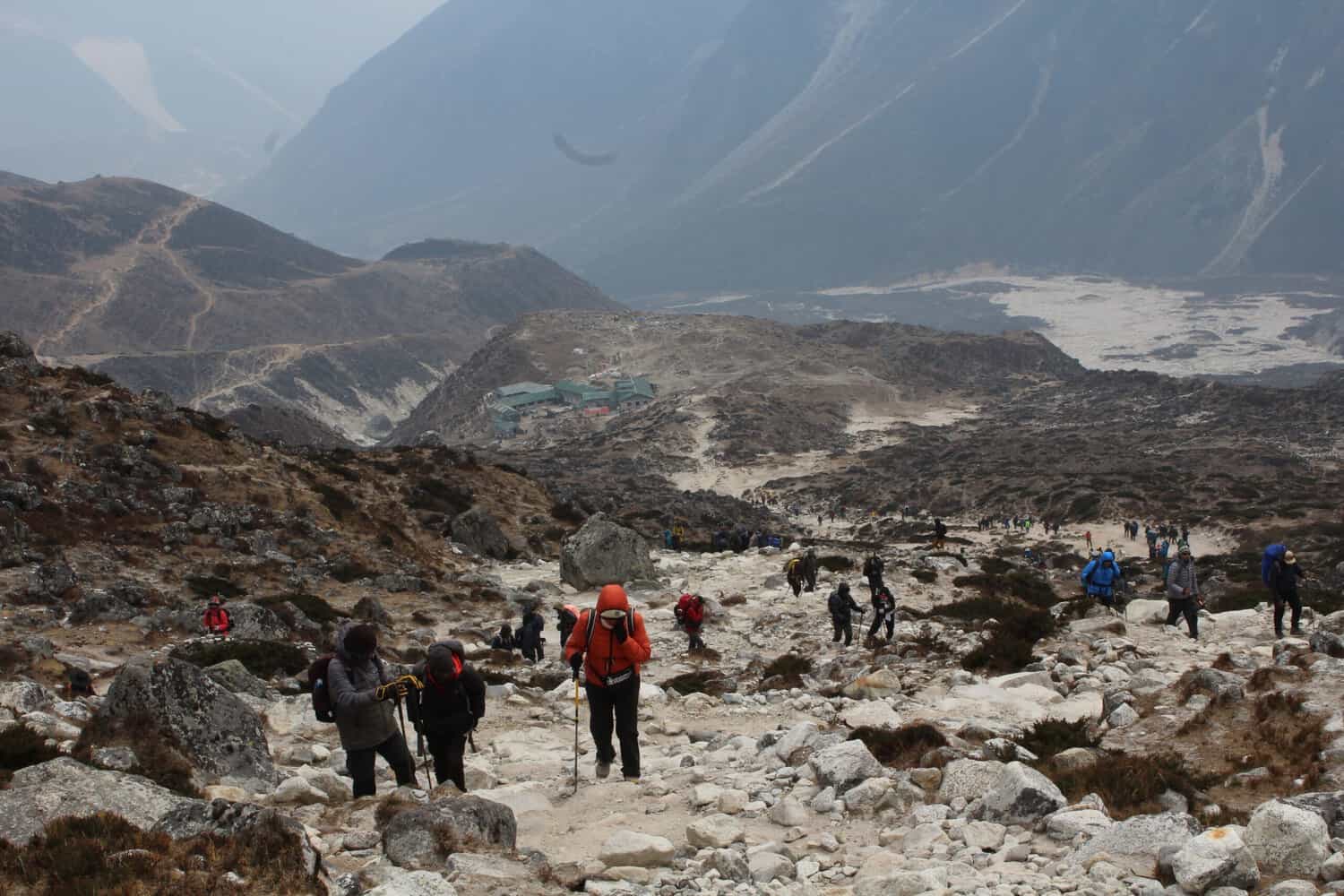
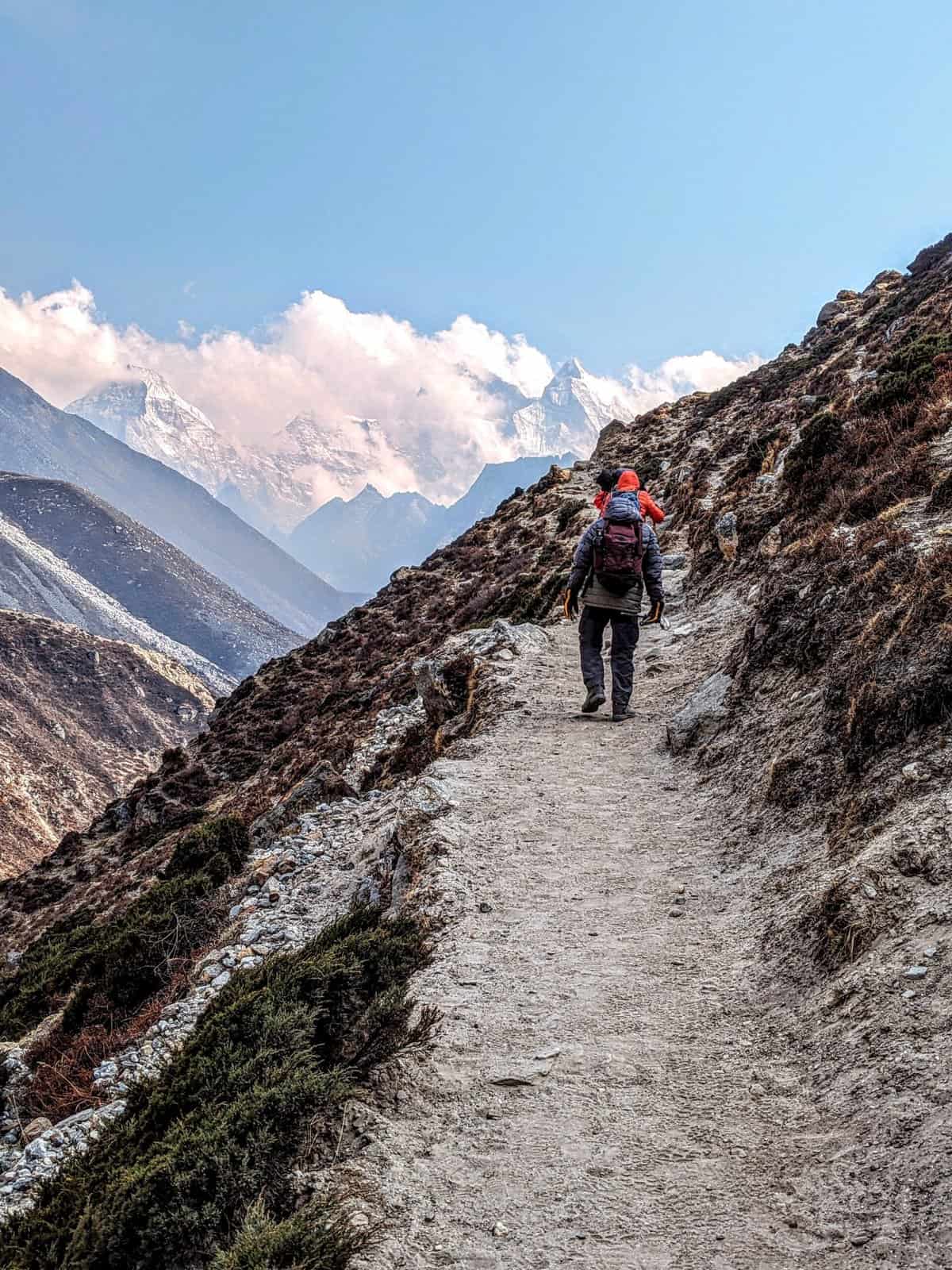
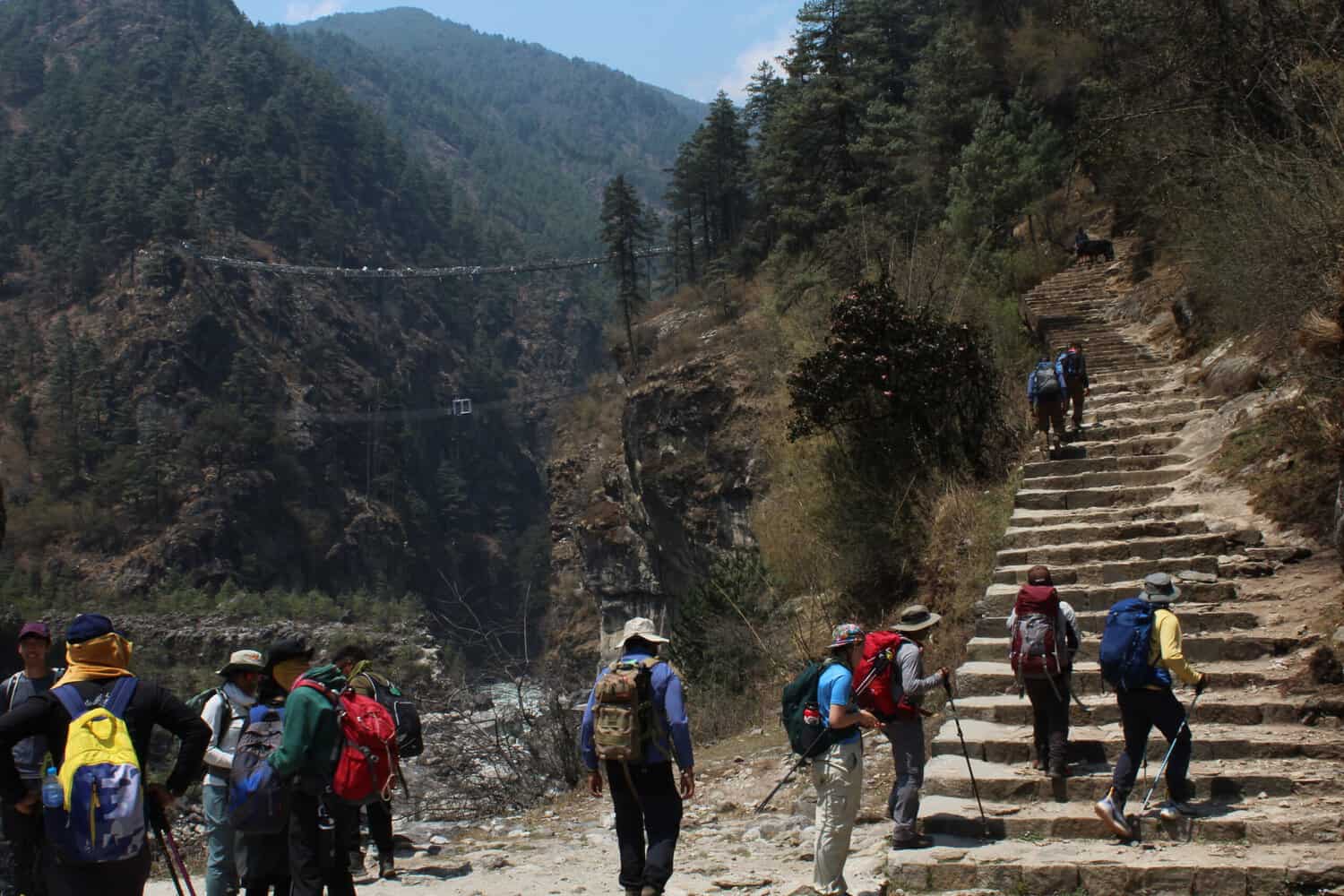

Don’t compete. Walk at your own pace. Rest and hydrate frequently.
Even in the initial couple of days when I was fresh and the climb relatively easy, I resisted the temptation to walk fast. The effective oxygen content in the air decreases with altitude and there is always the danger of High Altitude Sickness hitting you if you rush. On steeper climbs, I would breath deeply and take only 3-4 steps with each breath. I am convinced this helped a great deal. The fact that one gets to see some spectacular scenery on the way makes the journey as interesting as the destination itself. So I chose to enjoy every moment of the journey, taking as many short breaks as needed. Not only to rest, hydrate and absorb the glorious views but also to watch how other trekkers were coping.
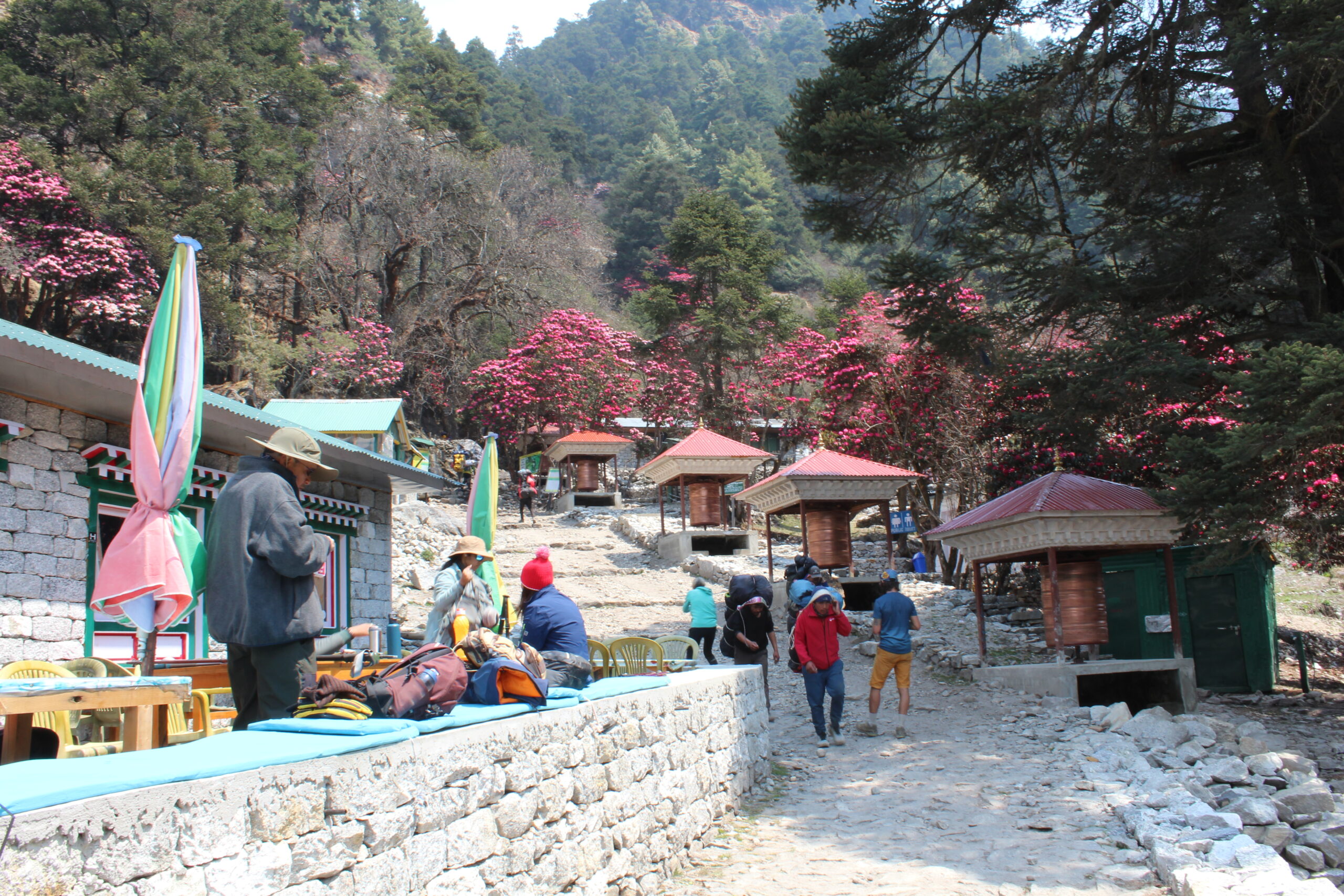
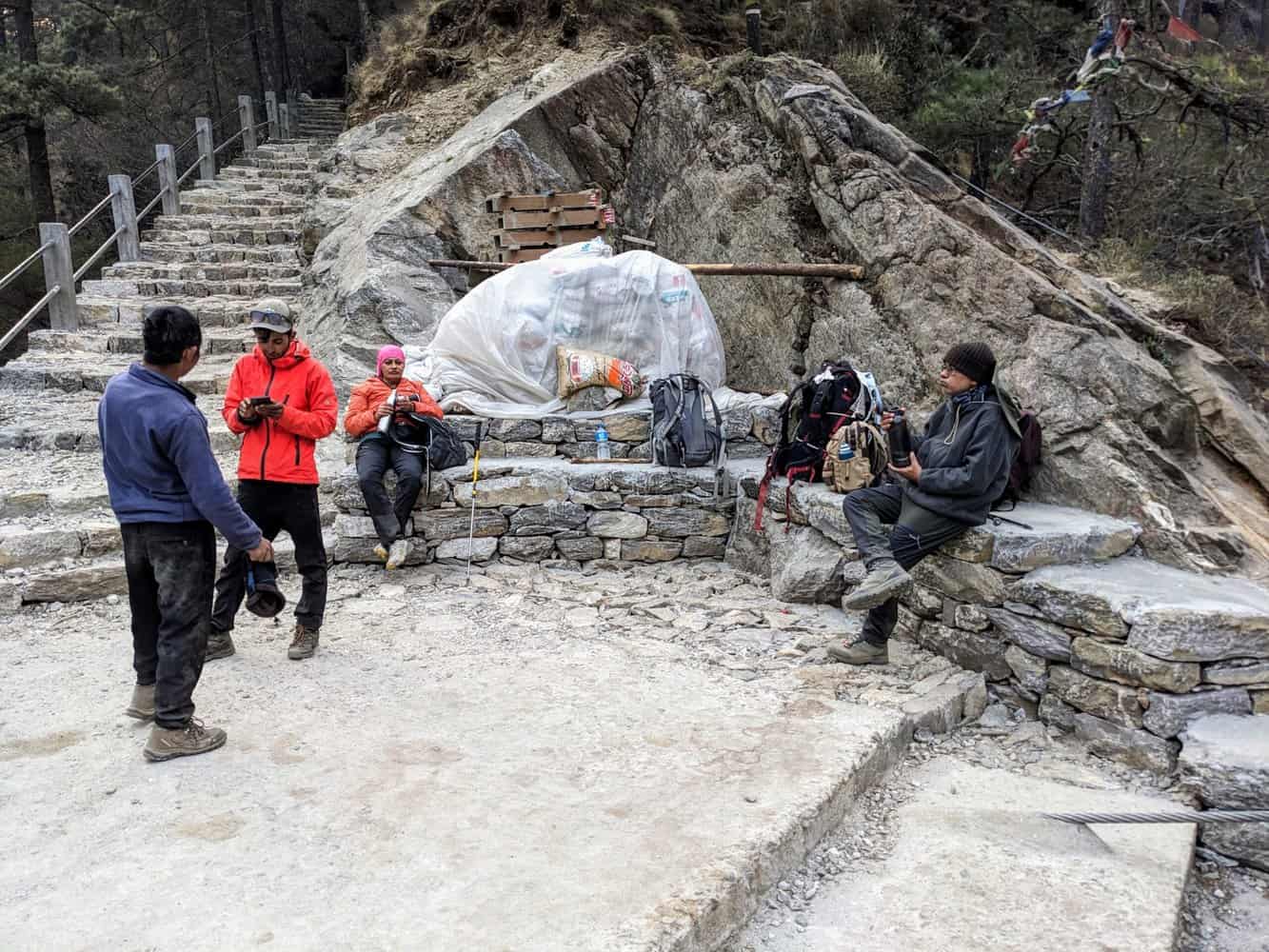
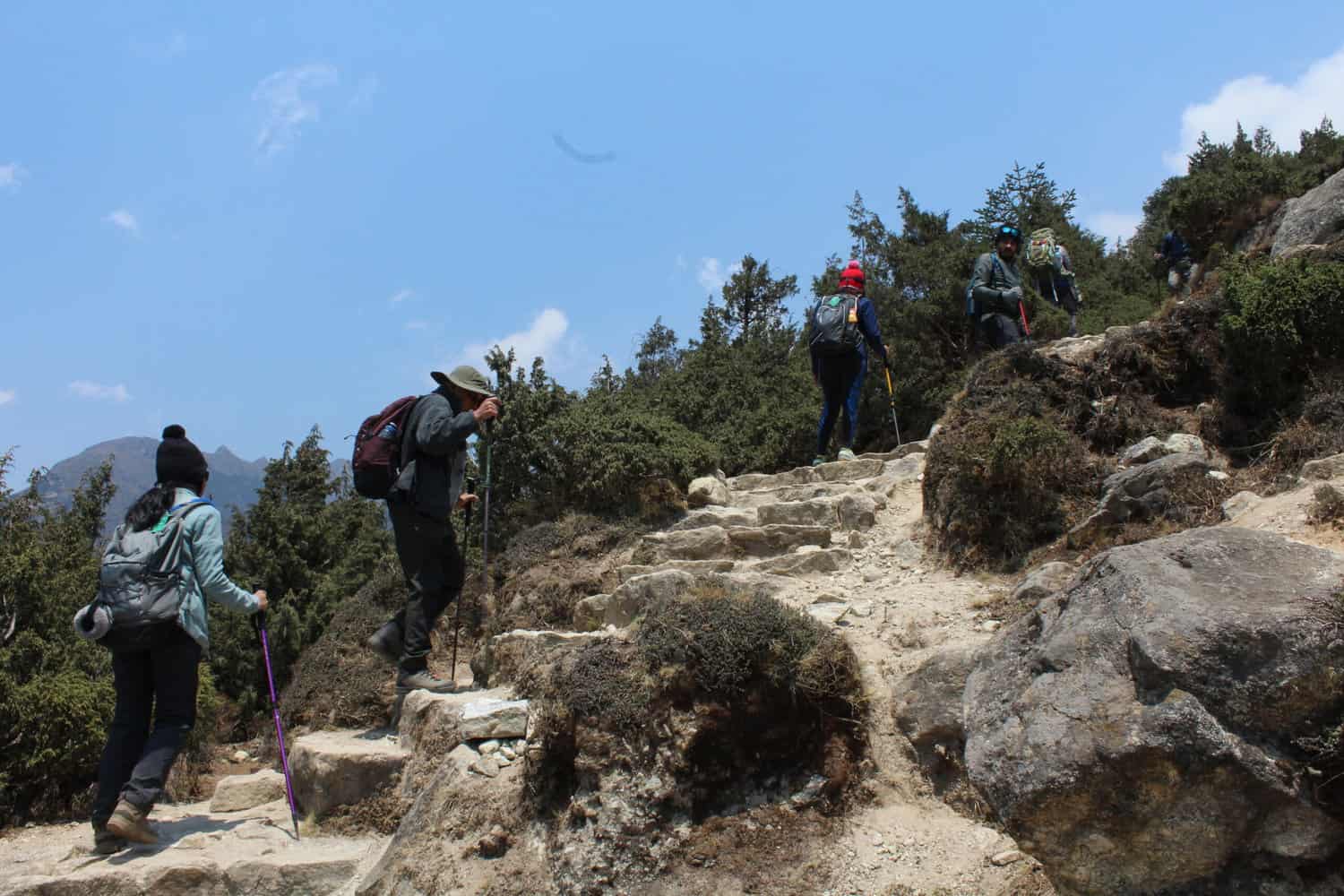

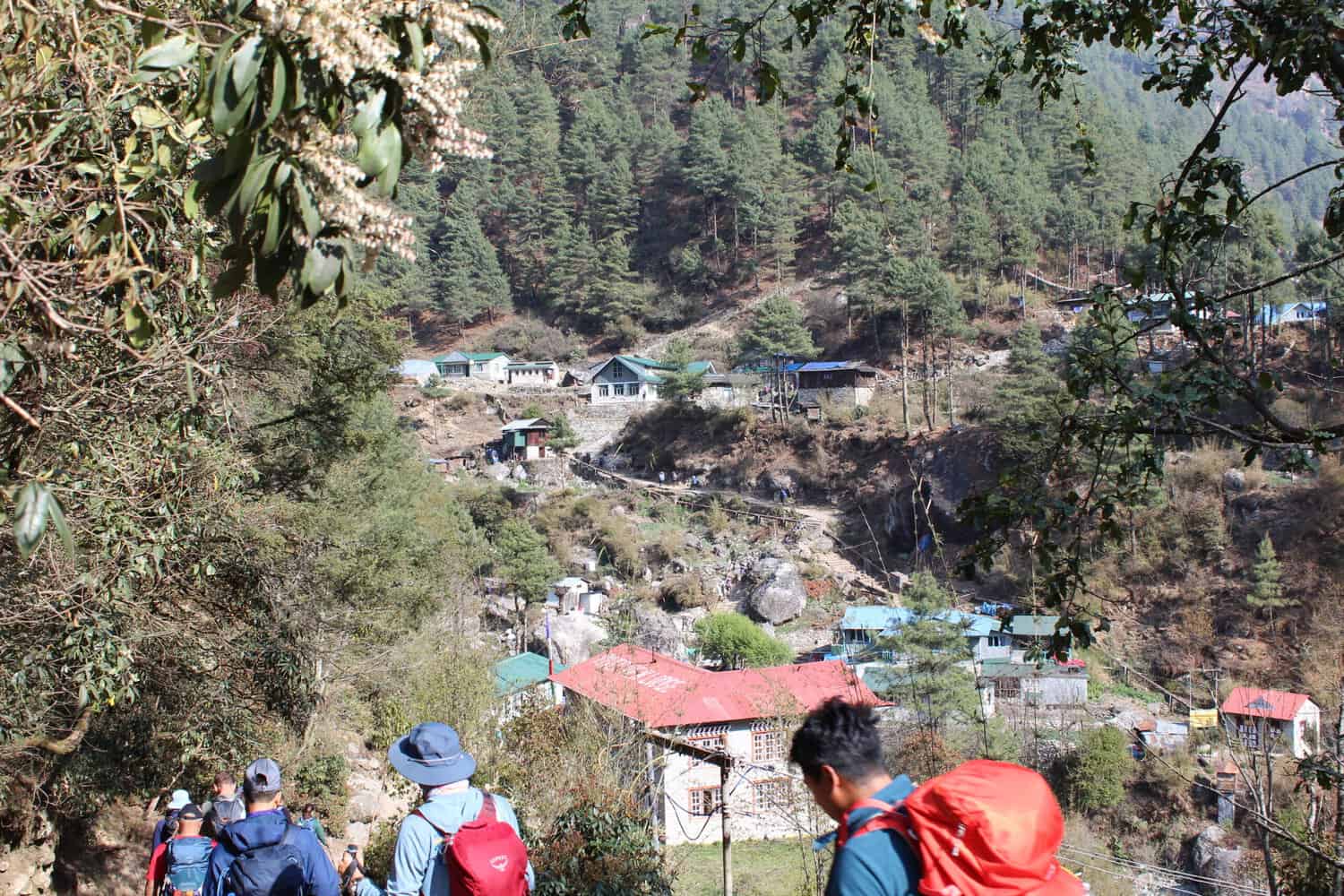
Stated distances and altitudes are approximate and not very precise
The sign boards enroute, my guide and ‘google’ all differed when it came to the exact distance covered and altitude reached. I tried to reconcile the numbers(what else being an accountant!) but gave up eventually. And also stopped thinking about distances and altitudes which also in a way helped.
The total distance one way from Lukla to EBC is stated to be about 60kms. It will vary marginally depending on the exact route taken and the hikes undertaken for acclimatization. Over 7 days, excluding the rest day at Dingboche, that is an average of 9 kms a day. We would typically leave at around 8am and reach the next halt between 4 and 5pm on an average. The average speed works out to ~1km an hour. This speed doubled on the way back to Lukla. I covered the distance in ~30 hours over 3 days.
I somehow felt the above statistics convey a much better picture than reality. Since time is correct, the only variable could be the distance.
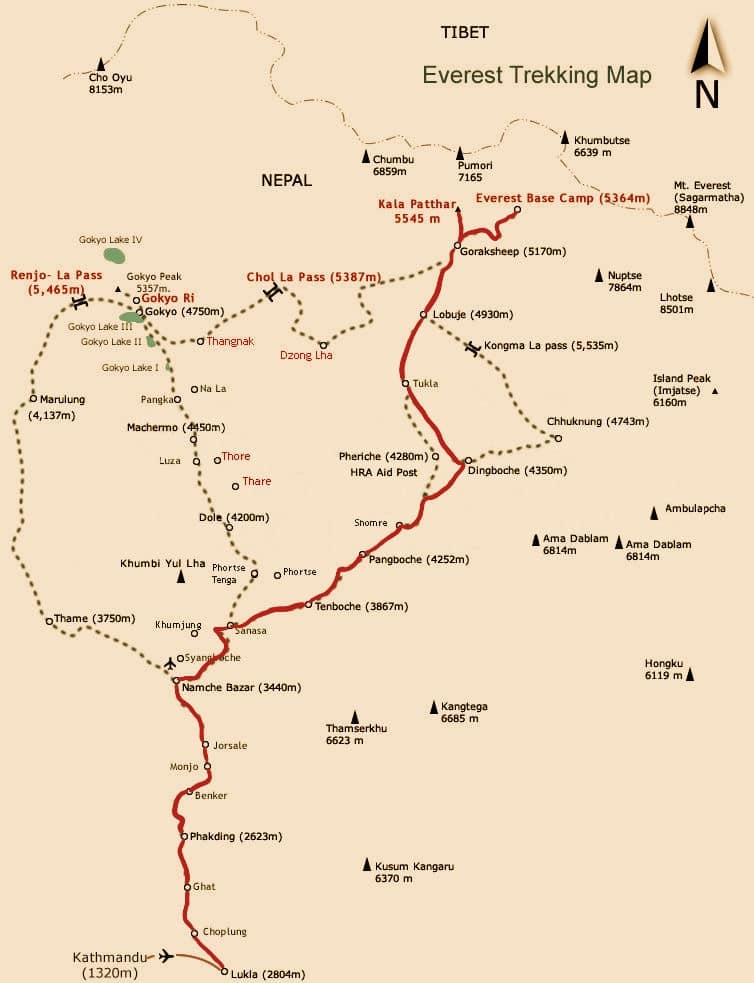
Be aware of underlying medical conditions
There was one young trekker whose back problem got aggravated at an altitude of ~13k ft. So much so he had to rent a horse to complete the rest of the journey and thereafter, fly to kathmandu from Gorakshep in a helicopter. Another person from my group returned from Namche Bazar. According to some estimates, the two key causes of death on the EBC trek are High Altitude Sickness and aggravation of any underlying medical condition due to high altitude. More details in a separate post.
Food, water and snacks
Hot vegetarian food, boiled or bottled water and snacks (mild salty/spicy variety and chocolates/energy bars(low sugar)) and fresh fruits. More details in a separate post.
What to pack – buy vs rent
I was given a long list of items to be packed. I had few of those already and considering that most of the items can be reused, I purchased the rest at Decathlon, which, though marginally expensive, had everything that I needed. If the usage is likely to be one time, some of the stuff can also be rented, such as sleeping bags, trekking poles, down jacket etc. Do check with your organizer on what can be rented either through them or in Kathmandu. Or borrow from friends/relatives.
Useful items not in the list
- Thermos
- Thermal covers for mobile/camera batteries.
- Thin cotton liners for pillows, bedsheet and blanket for those finicky about cleanliness. My guide told me these are normally washed once in a week.
- A brush to dust off the shoes and bottom of the pants every evening.
- Wide brim sun hat, with elastic band.
Carry 2-3 bandanas(not just one) given the dusty environment, running nose, and perspiration.
The most important item on the trek is the boots. It can make or mar the trek. Don’t compromise if you are buying a new pair.
On sunglasses, make sure it is polarized and offers UV protection. I had category 0 and it was good enough in end April and early May. You may need higher categories when there is more snow cover.
Thamel area is good for shopping
In Kathmandu, I stayed in the Thamel area(I think most trekkers do)and it happens to have plenty of shops selling and renting a variety of trekking gear. But in all probability, the stuff appears cheap because they are not originals and bargaining is possible! I only bought water purification tablets in Kathmandu. In hindsight this was unnecessary as I only had either boiled water or bottled water.
Lukla and Namche Bazar too have plenty of such shops.
Day packs needs to be sensibly packed
As I ascended to higher altitudes, I noted that the number of villages between two halts kept decreasing. After Dingboche, there are no villages, only tea houses with long lonely stretches without any shelter. Sudden rain/snow or gusty wind can catch one off guard. Since the porters travel much faster and will generally be ahead of us, it is very important to ensure one carries all that is necessary in the day pack. Do not disregard the guide’s advice.
Toilets en-route are not always well maintained. Make sure you have adequate toilet roll and wet wipes/sanitizing wipes in the day pack.
EBC trek options
One is spoilt for choice when it comes to deciding which Organiser you should go with. Stated rates vary depending on inclusions and exclusions. Do read the reviews before deciding. I chose an organistion called ‘we ramblers’ and I was happy with all their arrangements except for the transfers between Kathmandu and Ramechhap. As for the trek itself, there are couple of options.
By walk
The basic route which most trekkers follow is the Lukla-Phakding-Namche Bazar-Tengboche-Dingboche-Labuche-Gorakshep-EBC route. A variation is the route via Gokyo Ri which is stated to be tougher and marginally longer. A third route called 3 passes is for experienced trekkers only.
Walk plus helicopter
Instead of walking back from Gorakshep, there is an option to take the helicopter to Kathmandu. Unsure if the reverse option too is available….i.e. take the helicopter to Gorakshep/EBC and walk down to Lukla. Either way, it will obviously cost more.
Helicopter only
One can also fly over EBC and land at Kala Pathar. After spending an hour or so, fly back to Kathmandu. There will possibly be refueling halts on the way.
The costs will vary depending on the option chosen. Needless to add, the first option is the most economical but the second option too is worth considering if short on time. The third option is not about trekking at all. I chose option 1.
Most organizers will be flexible
Many organizers will provide options to modify the standard package, so as to include luxury accommodation, private transfers between Kathmandu and Ramechhap/Lukla, a personal guide, return by helicopter and so on.
Organised vs self managed trek
While it is entirely possible to do the EBC trek on your own, hiring a local licensed guide and porter is mandatory. While one can book accommodation online, choices will be limited and the rates may be higher. One can always take a chance and not book ahead of time but during peak season, that could mean sleeping in the common dining area, if at all. Best to have the guide or the trek organizer to do the needful, including obtaining the permits.
Is there a best time?
I took the trek in the month of April-May 2024, departing Lukla on April 21 and returned to Lukla on May 1. The weather was sunny(or cloudy on few occasions) on all the days and there was no snow(or rain) anywhere on the path to EBC. This made the trek that much more comfortable. But the nights were quite cold, especially at higher altitudes.
But the dry weather had one minus point. Dust. The trekking route was quite dusty and both my shoes and bottom half of the trousers were always covered in dust. Strong winds made matters worse by blowing dust. Sun glasses and bandana to protect the nose and the face is a must.
June to September is the rainy season and would possibly result in flight disruptions, besides encountering slippery path.
The peak months are April, May, October and November. Flights to Lukla during these 4 months operate from Ramechhap and not Kathmandu.
But weather can impact even in the peak months. A group I met in Kathmandu on April 20 faced flight disruptions on return. From Lukla, few of them took the land route that took over 12 hours while few more managed to get seats on the helicopter that cost USD 600 per person. The backlog was still being cleared when I flew out of Ramechhap on the morning of April 21.
Data connection/Wifi is poor
Whether you have an international roaming data connection or buy a local sim at Kathmandu airport, or buy wi-fi cards at Tea Houses, data connection is quite slow. Works well only once in a way. And for 3-4 days at higher altitude, there will be no data connection or wi-fi. But honestly, it was such a big relief to use the mobile phone only for clicking pictures!
Buy local currency in Kathmandu
Though Indian currency accepted in a few places in Kathmandu and Lukla/Namche Bazar, it should be converted to Nepalese rupee in Kathmandu preferably. I did spot one or two ATMs after Lukla at Namche Bazar and Dingboche and noted that few standalone cafes/restaurants also accepted credit cards. But better to take sufficient cash in local currency. Good thing is that if you run out of cash or in case of any other exigency, the tour organizer will normally make necessary arrangements and they can be reimbursed when you return to Kathmandu.
Specific Insurance cover is needed
Normal travel insurance does not cover medical evacuation and more importantly, adventure activities such as high altitude trekking. There are 2 India based organisations that provide specific insurance cover for EBC trek – Adventure Sports Cover 360 (ASC360) and Asego. Includes medical evacuation in case of emergency and provides compensation if scheduled flights are cancelled due to bad weather. Plus everything else that a standard travel insurance covers. They are only intermediaries and the actual policy is issued by insurance companies such as ICICI Lombard. But strangely, ICICI Lombard does not issue the policy directly to the customer!
I chose Asego and received my policy within couple of hours of application.
The EBC trek is quite affordable
I spent ~ INR 190k on the trek. Rough break up is as follows:
- Payment to the organizer – INR 58k, including 10k for attached toilet
- Bengaluru to Kathmandu return air fare – INR 32k
- Tips to guide and porter – INR 6k
- International roaming – INR 5k
- Food, beverages including water, miscellaneous–INR 45k
- Trekking items purchased – INR 30k
- Insurance – INR 6k
- Miscellaneous outside Nepal – INR 5k
In Kathmandu, convert a minimum of INR 50k to Nepalese Rupee. That way, you do not need to compromise on what you eat/drink later.
Tip the porter and guide well
Just a point on the tips to guide and porter. Porters typically make ~INR1k per day while guides make ~INR1.2k. Experienced guides earn more. Guides may enjoy free food and accommodation but porters have to pay for food. There is no doubt carrying 25kgs of baggage(one porter takes 2 bags) from Lukla to Gorakshep and back is a tough job. While it is an individual choice, you will leave behind smiling faces if you tip them well.
Getting to Nepal
Royal Nepal Airlines operates a direct flight from Bengaluru to Kathmandu thrice a week. Other option is to take a connecting flight via Delhi which is what I did.
Is EBC trek worth it?
Absolutely. Worth every rupee spent. Only pray that the weather stays clear for one to have unobstructed views of Mt Everest, Lhotse, Makalu and several other peaks that are way taller than those elsewhere. None of the other treks anywhere else has this advantage.
Other than the highest peaks in the world, the diverse terrain one comes across itself is fascinating. Especially the ruggedness after Dingboche. This is one place where the enormity of nature is palpable and underscores how insignificant we humans are.
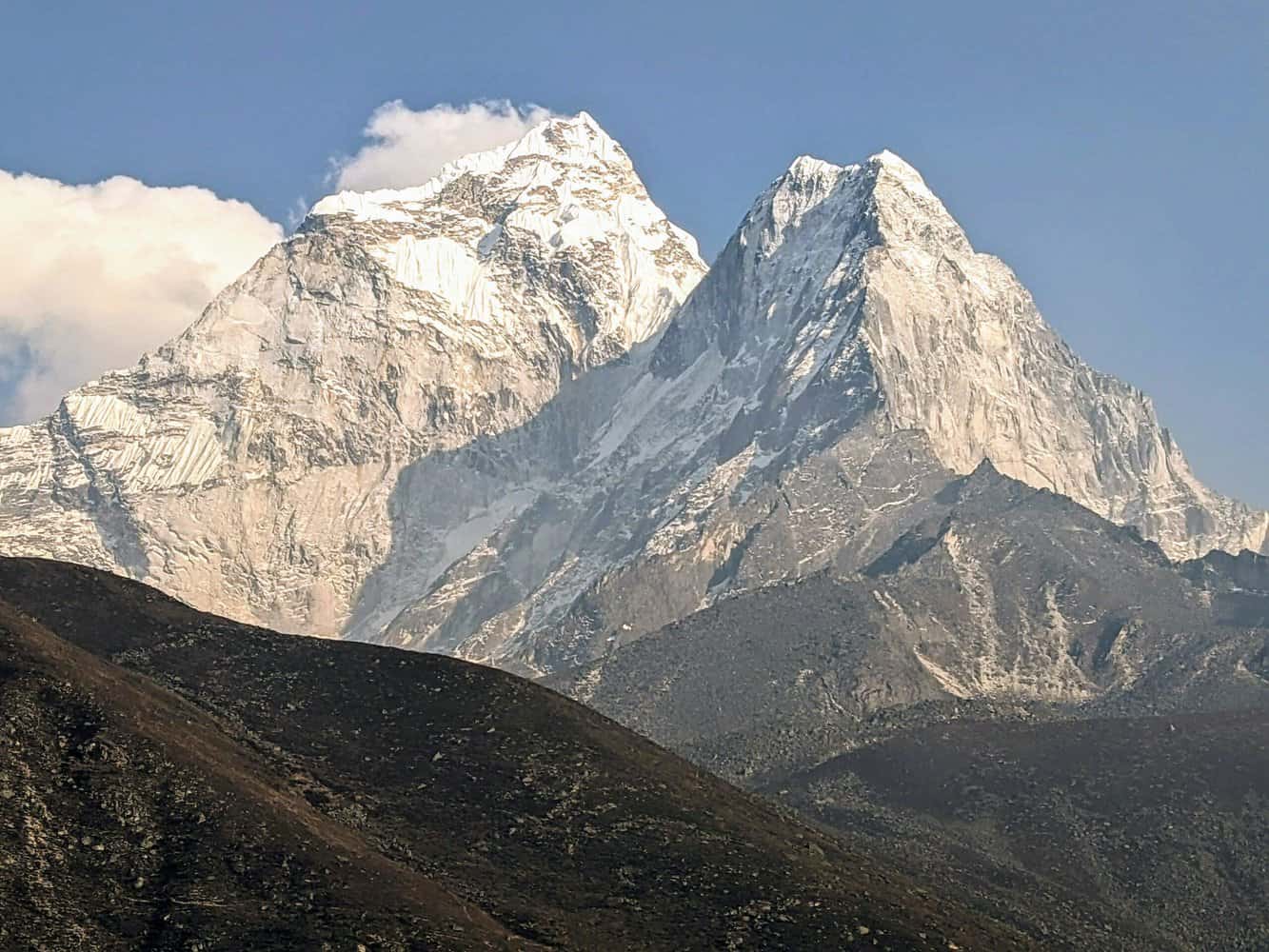
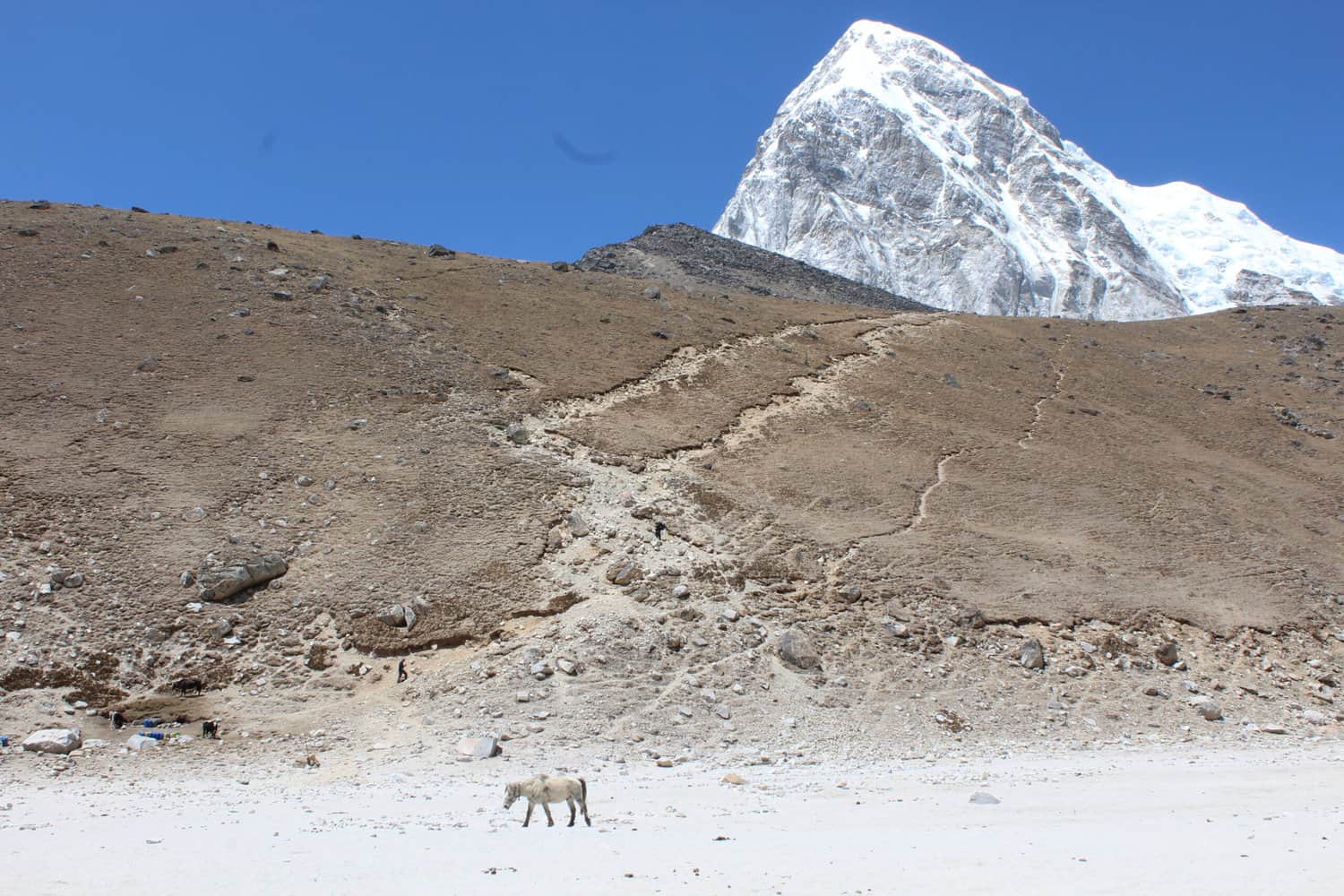
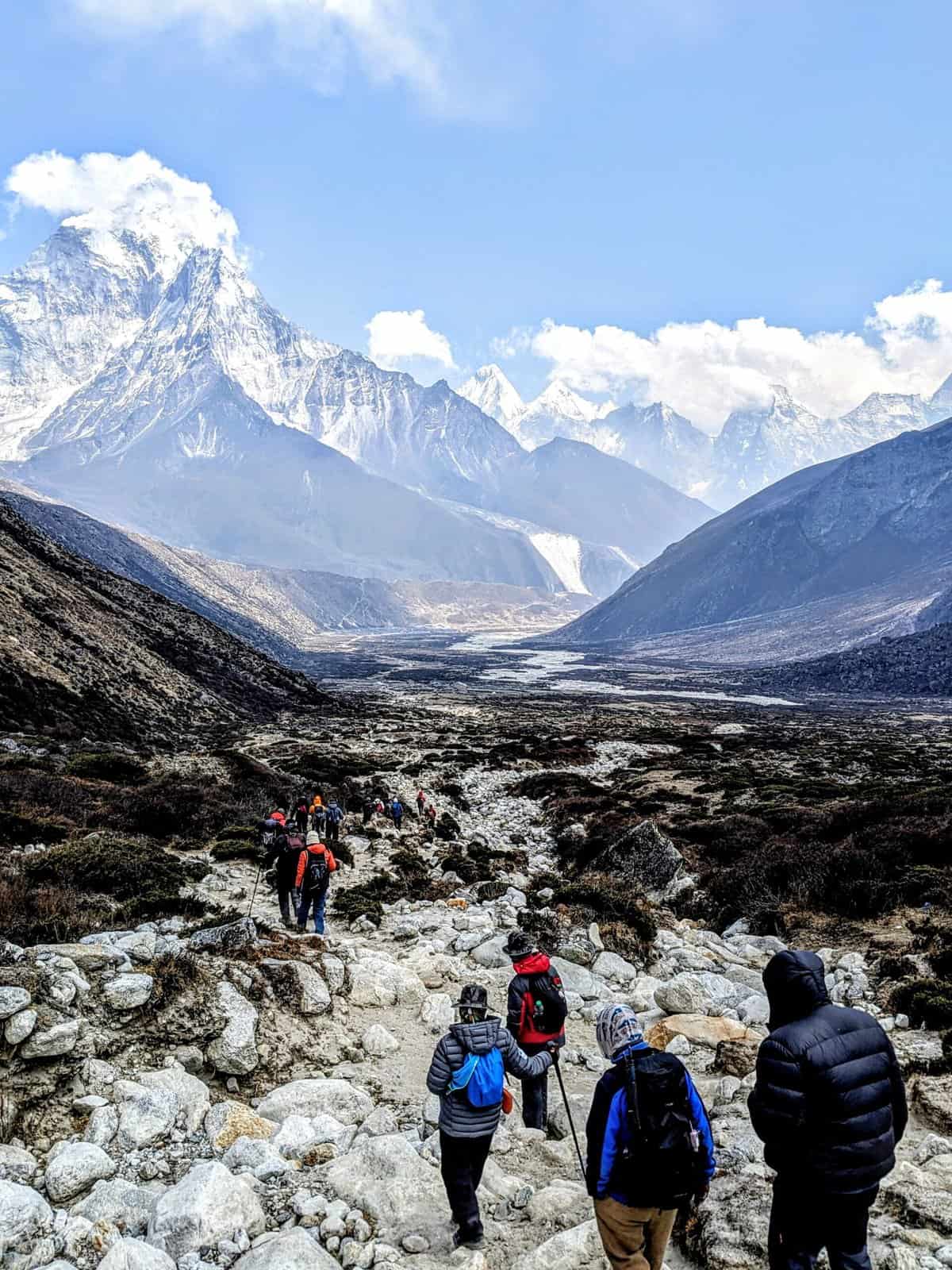

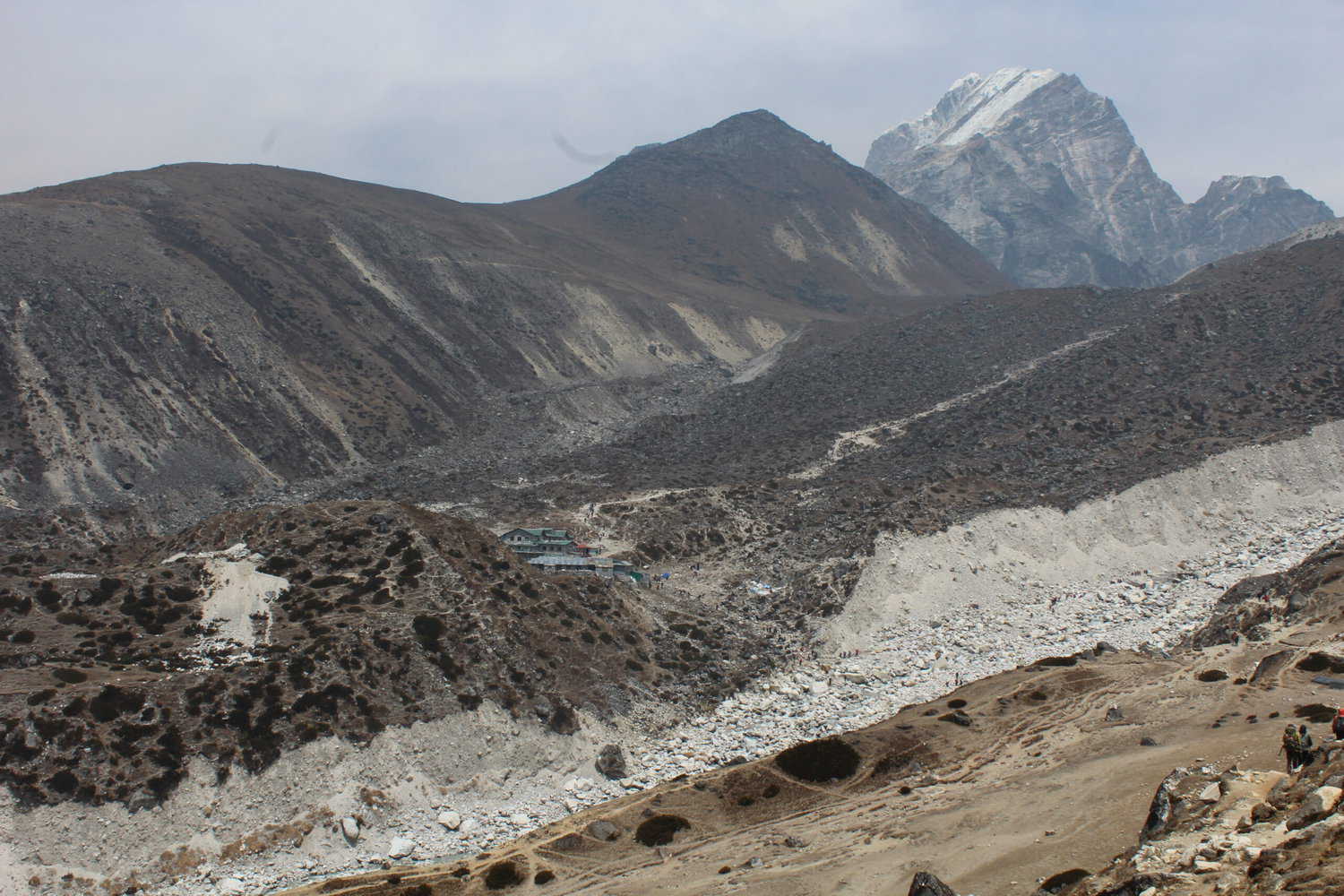
For more information
We Ramblers – my EBC trek organiser
